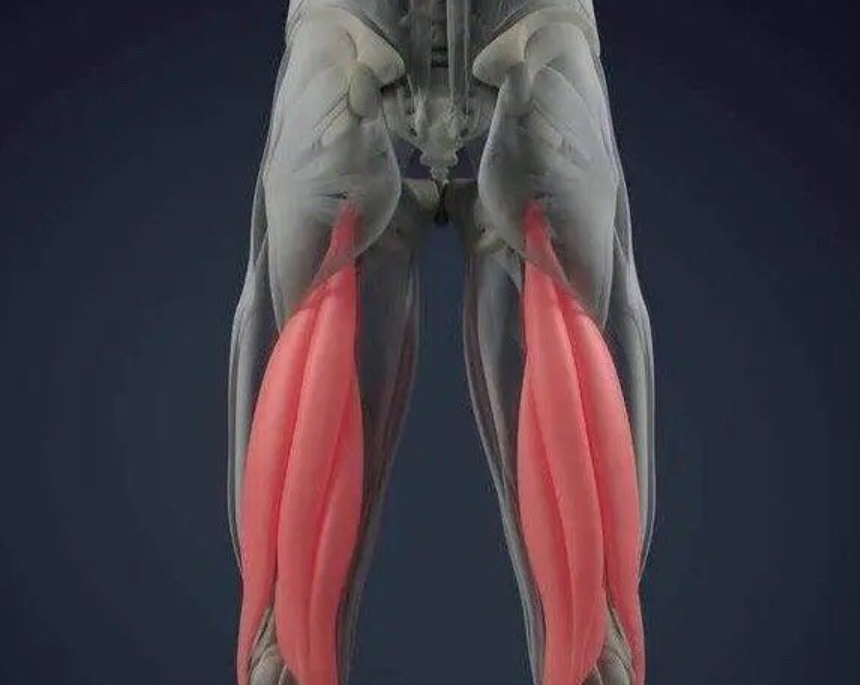Nowadays, many benefits of yoga are more and more respected by sports lovers.

Since ancient times, people have relaxed their body, mind and tense muscles through yoga training.

But this sport, like other sports, will cause physical discomfort and pain when training improperly or overtraining.

For example, do you feel physical pain and cramps when performing downward dog pose? If there is, it is like the runner’s muscle and knee injury caused by continuous wrong training.

In foreign countries, there is a term called “Yoga butt”.

Although it is not a medical term, it is a kind of injury that may be caused by yoga training.

To be more specific, yoga butt is an over training injury caused by some of the most basic and frequently performed postures.
Next, we will explain this kind of sports injury and tell you how to avoid it.
What is Yoga butt? Yoga butt is generally called deadbuttsyndrome (DBS), which is literally translated into Chinese as “dead butt syndrome”.
It is an unofficial term for gluteal tendon disease or gluteal amnesia.
This kind of phenomenon is also known as high hamstring disease.
It is caused by irritation or inflammation of the hamstring muscles at the back of the thigh near the ischium.
Dr.
Peter Bailey, an American family doctor, said that although there are many factors that can lead to this problem, including muscle strain and overuse, the main reason is the sedentary lifestyle.
Humans should not keep sitting for a long time, which is easy to make the hips fall asleep and cause back pressure, making the muscles around the hips stiff and painful.
In addition, yoga medical treatment expert jennitarma explained that these tendons may also cause acute injuries due to sudden movements or overtraining, such as sudden tears or sprains, which are common during exercise.
At the same time, it may also be a chronic disease accumulated over time.
The cause of Yoga butt, yoga medical treatment expert jennitarma said that in the context of yoga practice, the main influencing factor is to repeat the posture that requires the maximum range of motion of hip flexion, including forward folding, surrounding posture, splitting posture and any posture with feet placed in the back of the brain.
This is due to the limited elasticity of tendons.
Therefore, many actions will lead to overextension and stimulation of tendons.
Dr.
leadamalek, a physical therapist, also pointed out that because some yoga postures have parts of standing on one leg and hip rotation, strains of high hamstrings and deep hip rotators and piriformis syndrome are very common.
When hips and knees need stability, ideally, the entire gluteus, high hamstrings and deep hip rotators can work together effectively.
However, if the muscle groups in these parts deviate slightly due to pain or weakness, it may cause the rest of the region to need compensation to stabilize the body, so it is easy to cause this problem.
Tarma also added that many yoga training postures do not include training to strengthen the hamstring muscles, and excessive or extreme stretching training may aggravate this problem and lead to the decline of overall function and tolerance.
In this sense, hamstring tendon disease is not only an injury caused by overuse, but also a problem of insufficient load capacity.
These muscle groups do not have enough strength to accept the burden, so they lose the ability to bear pressure in some sports or joints, resulting in pain in these parts.
Red is the symptom of hamstring Yoga buttocks 1 The buttocks suddenly feel a slight tension.
2.
When practicing yoga sitting posture, you will feel pain at the sitting bone.
3.
The small muscles behind the hip muscles feel numb and sour.
4.
There is pain at the joint of hips and thighs.
5.
Thigh swelling and slight pain in the lower back.
How to treat Yoga butt? The National Institutes of Health pointed out that practicing yoga has many benefits for the body, including increasing strength and endurance, obtaining better physical fitness, enhancing body flexibility, reducing low back pain and stress, so we should treat and alleviate the problem of Yoga butt.
Because many people regard this problem as recurrent, jennitarma, a yoga medical treatment expert, suggests that when such phenomena and symptoms occur, please rest directly, pause training for a period of time, and then make improvement until the symptoms are relieved.
At the same time, this means that in order to avoid any posture or action that will cause such symptoms, you must change the training posture and action during yoga classes, and may tie compression bands on the upper thighs to reduce the pressure on the hamstring muscles and their tendons.
But these are only temporary relief.
If you want to improve this symptom for a long time, you must strengthen the training of these organizations to make them stronger, develop better overall coordination and the ability to withstand pressure, and use different training methods to strengthen tendons and muscles as much as possible.
Therefore, tarma suggests that most people can use isometric static strength training.
Once these forces can be controlled, they can carry out more challenging training methods, such as centrifugal and enhanced training, and gradually increase weight-bearing.
Squatting and hard lifting in weight-bearing style are good training actions.
Finally, tarma said that it takes a long time to solve and improve this problem, so knowing how to manage your expectations and maintain a good attitude and patience has also become a very important training content—— Reference: healthlineparade ✎ article source: Healthline parade article.


